5 Key Benefits of RedPine Monitoring, Dispatching and Management Systems
In the previous publication, we told about the history of Red Pine creation, trying to show on an enlarged scale why we once chose the path of developing our own monitoring, dispatching and management system and what opportunities we have become available thanks to this.
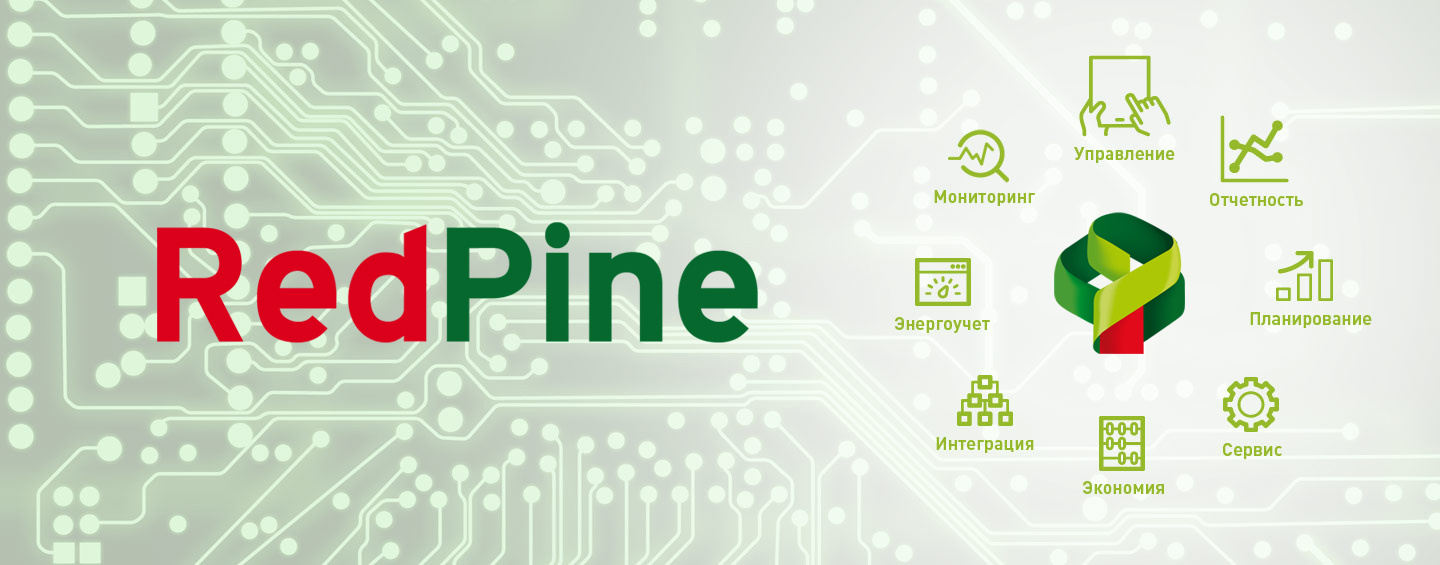
We have identified 5 key advantages that allow you to realize all the capabilities that a modern monitoring, dispatching and management system should have.
In the new article we will tell you more about each of these 5 key points and explain why they are really key, and why we call them advantages.
The most annoying thing you can hear from providers of monitoring solutions (and in other areas) is “we don’t know how to do that.” This phrase usually puts on beautiful marketing outfits, but the potential customer still clearly understands its essence. It is especially unpleasant to hear such a functional, which is important, but simple with manual control. For example, when control of operating hours is possible, but there is no monitoring of fuel consumption.
But if at least one of the required parameters is not supported by the remote monitoring system and requires manual intervention, then the whole system loses its meaning, because the capabilities of the entire solution are limited by the capabilities of the weakest link.
It was with such thoughts that we approached the creation of Red Pine - the system should be able to perform a wide range of tasks, as well as be trained. That is why we chose a modular design consisting of a central computing device (controller) and plug-in modules and sensors, which allow us to quickly “customize” the system for each customer.
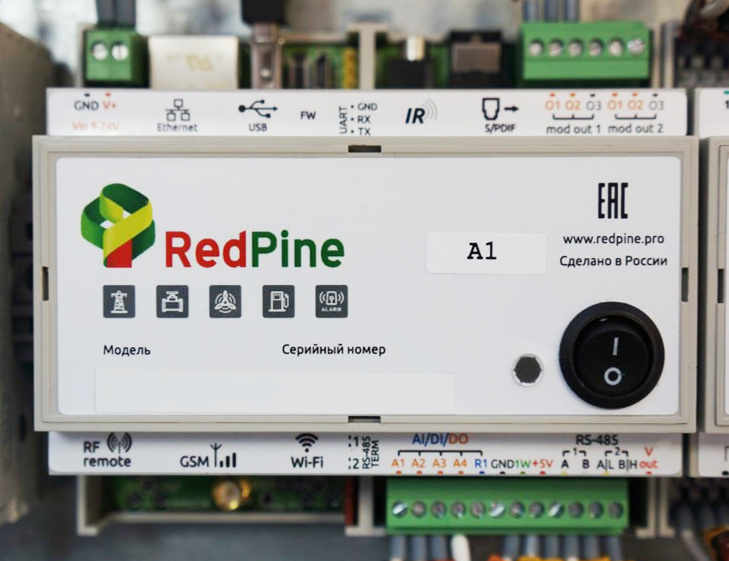
RedPine Controller
The central unit is the “controller”, which is an industrial modular mini-computer controlled by the Linux operating system, with specialized software for processing data from various engineering systems installed on it.
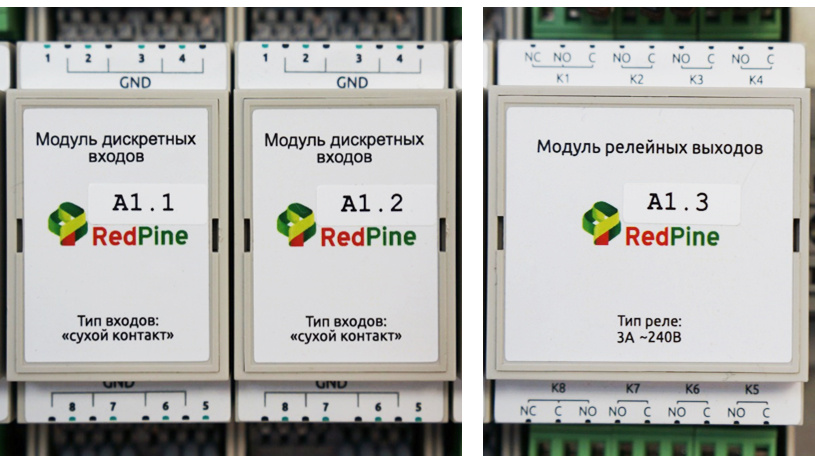
RedPine Modules
In the role of plug-in modules are various sensors and measuring devices, including those certified in accordance with GOST standards applicable to measuring instruments.
The controller has a certificate of compliance with EAC and is produced in Russia in two main series and has various types of execution (installation on a DIN-rail or as part of the Guards in accordance with the requirements for IP)
RedPine EVMK - standard version for DGU , AVR , VSU of various versions based on the types of terminal equipment. In this case, the equipment may or may not have a digital communication interface.
RedPine MK is a specialized version for solving highly specialized customer tasks, which can combine specialized settings of several engineering systems and can be equipped with all sorts of optional modules.
At any time, at the request of the customer, you can add new modules, expanding the functionality of the entire system. It is also possible to integrate into existing customer monitoring systems using standard protocols, as well as to fully transfer decision management to the customer for its integration into its upper level systems.
The problem with the presence of highly specialized specialists for the installation of this or that equipment is particularly acute if the equipment is different, there are many of them, and it is located not in the central part of Russia, but far beyond the Urals.
Very often, manufacturers and equipment suppliers put such a condition: “installation and maintenance should be carried out only by specially trained certified specialists with a special unique tool.” And the customer has to wait for the arrival of specialists who are very expensive.
Of course, in some cases this requirement is really reasonable and crucial for the operation of the equipment. But not always - sometimes this requirement is unjustified, except that the supplier wants to earn extra money and artificially “tie” the customer to himself and his super-specialists. By itself, this fact is not so bad - let the work be performed by those who can do it, but only if the cost of such services does not significantly exceed the cost of services of local specialists, even if it is not “authorized”.
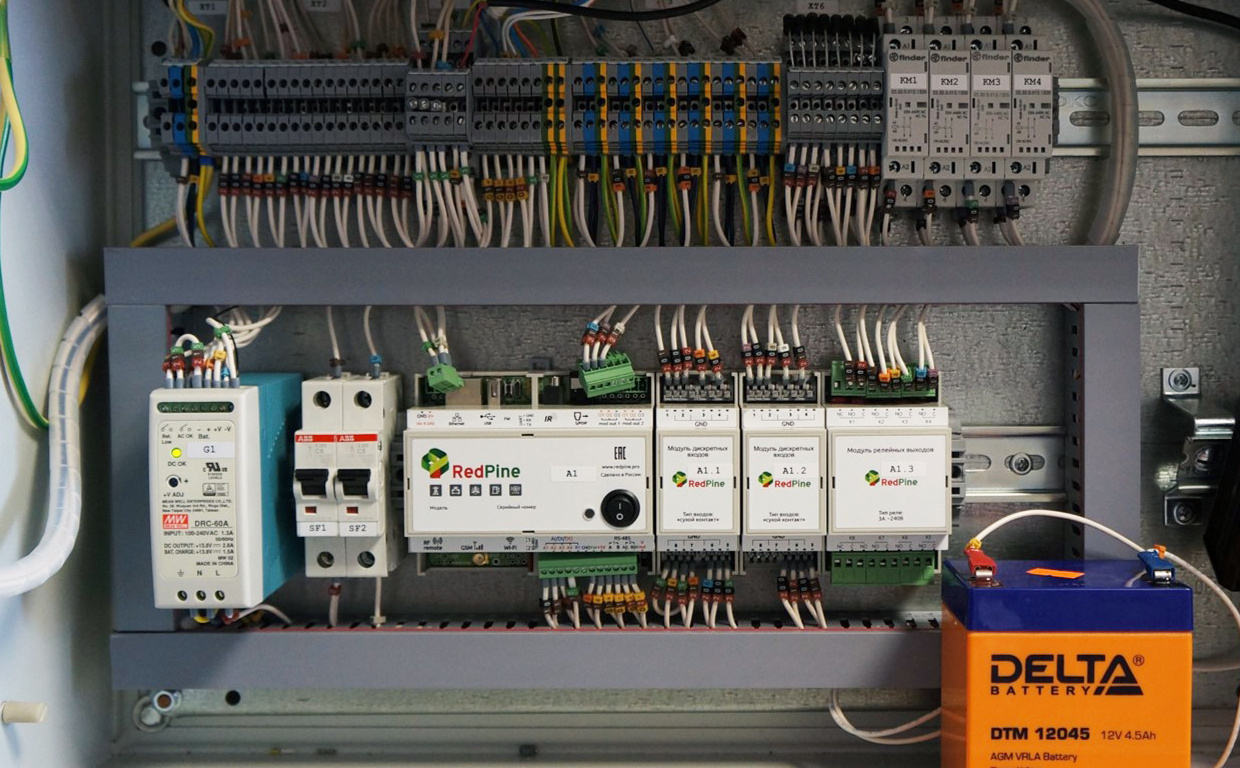
An example of mounting a RedPine system
Understanding this, when developing Red Pine, we provided for the possibility of installing the device itself and its additional modules by multi-skilled electricians without in-depth knowledge of the specifics of our particular product. The participation of our specialists is reduced only to the transmission of instructions for installation and assistance in setting up the system, which can sometimes be done remotely.
And as a result, the customer does not overpay for the implementation of the system, and we do not need to have a large staff of specialists for the installation of a monitoring and dispatching system.
To provide wide functionality and flexibility of the solution, it is not enough to have a modular hardware. The software platform should also allow to modify the system, add new functions and adapt them to the specific tasks of the customer.
The software part (software) is no less important than the hardware (hardware). These are two halves of one whole, and if one of the halves works poorly, then no matter how perfect the other half is, the whole system will work poorly. Therefore, when developing software for RedPine, we just proceeded from the fact that it should be as adaptable as possible for various tasks, just like the hardware.
Basic principles of the Red Pine software platform :
But what about the interface? Rich functionality and flexible settings are all very healthy, but in the modern world it is important not to forget that all this is done for people, so the user interface should be not only functional, but also convenient and understandable, preferably without instructions.
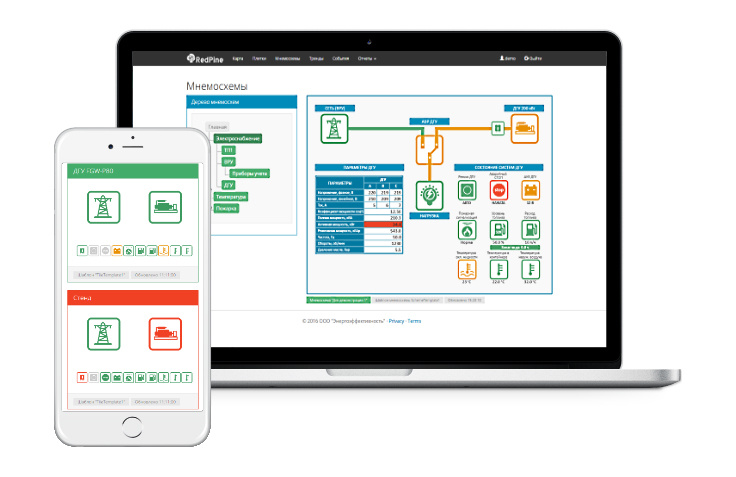
WEB interface of the Red Pine monitoring system :
Once again, the specifics and set of equipment is different for everyone, and therefore the requirements for the monitoring and dispatching system are also quite individual. Red Pine software is ready for this, and if it doesn’t know something at the moment, our specialists will teach it.
By the way, you can see the interface right now and try it right now - a special demo version is available for monitoring and controlling diesel generators using the RedPine system.
The most important parameter of the monitoring system is the transfer of data from equipment to the user, because the methods of transferring this data may impose significant restrictions on the capabilities of the entire system. With a wired connection, everything is clear - here no one has any problems and everything is simple. More important is the issue of wireless communications for working with remote objects.
Even before the birth of Red Pine , when we tried to use third-party systems, we faced one problem - when it came to wireless data transmission, these third-party systems required static IP and high-quality wireless communication channel with high bandwidth, because the amount of information sent and received was big enough. As a result, it all came down to the fact that a generation of communication no lower than the third ( 3G ) was required.
And now the question is - where in Russia can you find a stable signal ( 3G )? The answer immediately comes to mind about cities and large populated areas. This is logical, because mobile operators seek to provide their services primarily where there are more users of these services, and 75% of the population of Russia is the urban population.
But after all, equipment that needs remote monitoring and control can be located anywhere. And the farther from the settlement it is located, the stronger the desire to visit it less often, because it is both long and expensive. But there is a problem - it is absolutely impossible to catch 3G in such distant places, and therefore the monitoring system, which requires such a fast communication channel, will not work there.
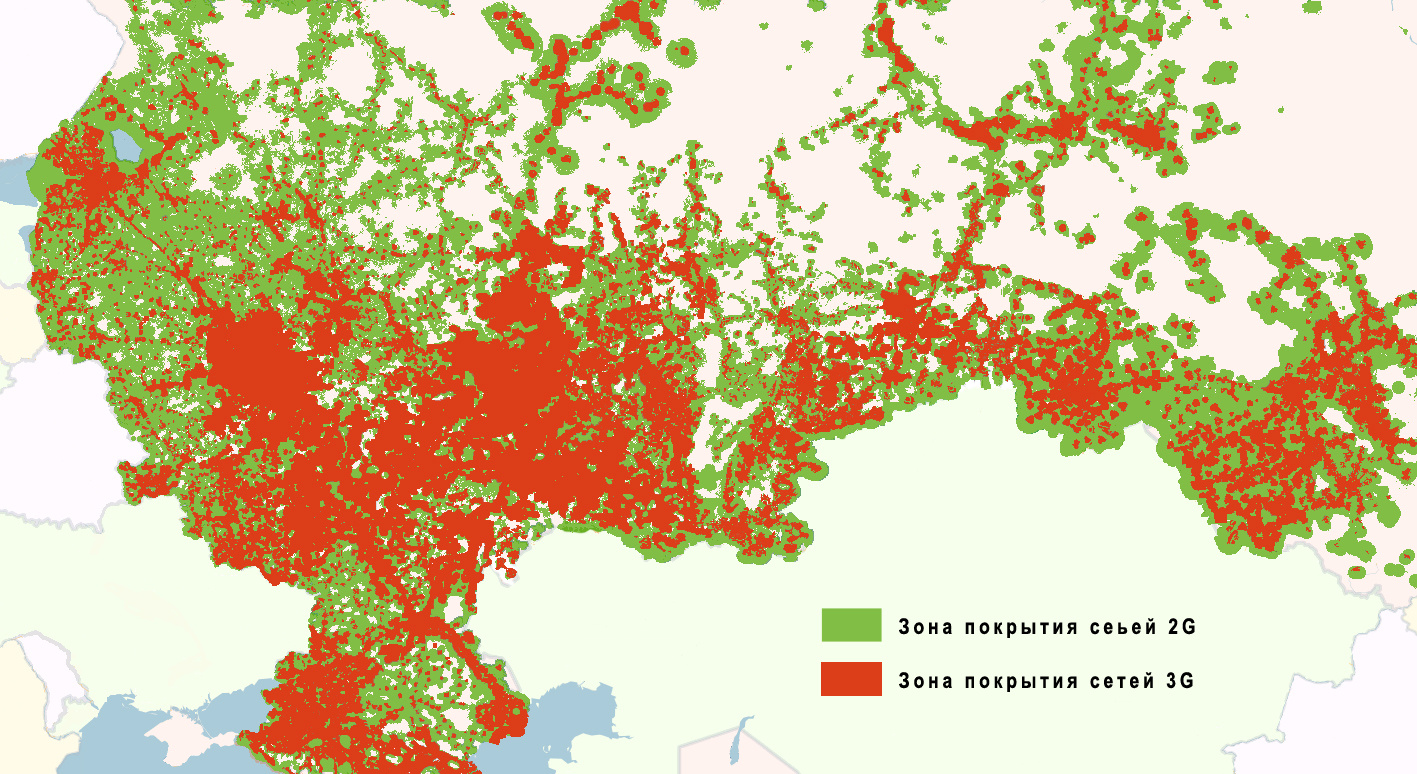
Illustration of 2G and 3G coverage areas in Russia
The situation with ( 2G ) is more rosy - there is the same logic (cities and villages in the first place), but the coverage area of this communication generation is several times larger than that of 3G, and already partially covers roads, fields, forests and mountains.
We did not want to limit ourselves to a small area of coverage, so when developing Red Pine, we worked on reducing the amount of transmitted data so that they could be efficiently sent over networks ( 2G ) without the need for static IP. This has significantly expanded the scope of the RedPine solution and is suitable for a much larger number of customers - the equipment can be located somewhere in the forest or at a remote field, it can be moved, and the connection with it will not be lost.
Reducing the amount of information transmitted and working with 2G networks allows you to monitor and control almost in real time with a large distance from the object. Data is transmitted via a modem with a conventional SIM card on board in small packets with the frequency that is necessary for effective control. Due to this approach, data updating can occur as once a day (when more often it is not needed), and every second (if necessary). There are a lot of options for setting data transfer, but the main thing is that we are practically unlimited in choosing these options.
Universality, the so-called "omnivorous" monitoring system Red Pine - is the result of the fact that it was not developed in isolation from reality, but created as a universal response to the challenges that harsh reality threw us.
The pathos sensors are slightly overwhelming in the previous paragraph, therefore, slightly lowering its degree, we will explain the main idea more on the surface. The fact is that when we came to the idea of creating a monitoring and dispatching system, there were already similar solutions on the market, but more often they were sharpened by a very narrow list of equipment due to restrictions on brands, by type of equipment, by type of control panel.
And what about those who have equipment from different manufacturers or with different control panels? What should be done by those who want a unified monitoring system to monitor both ventilation and generators and guards? But this is the desire of almost any customer, because few people install equipment of the same brand and type, and it is impossible to find a manufacturer who also manufactures power and, for example, climate control equipment.
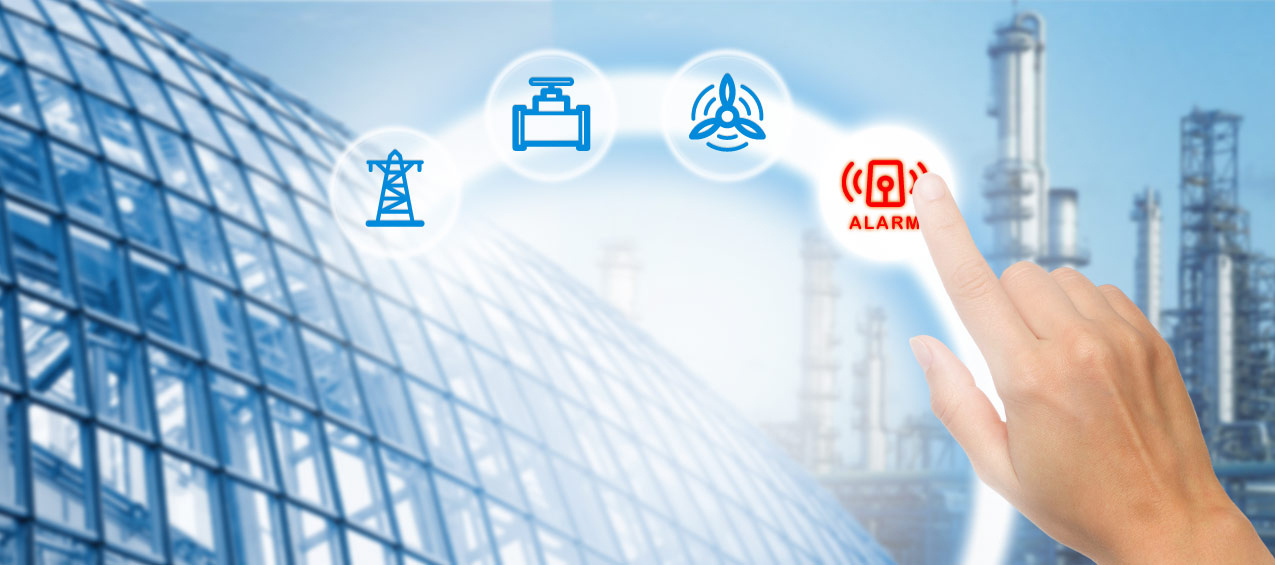
In reality, the engineering systems of the customer are a multinational composition of equipment of different ages. Each separate engineering system is rather isolated and their controls are not compatible with each other in terms of convenience of centralized monitoring and dispatching. Therefore, in order to combine them all you need a third-party solution that will teach each system to transmit all the necessary data in a common language.
This is the basic concept of Red Pine . We needed a monitoring system for our own fleet of equipment, which consisted of power plants of various capacities with various control panels. We did not find such a solution on the market, so we developed it ourselves and for ourselves, and then began to offer it to everyone.
Therefore, although I apologize to the pathos in the first paragraph, I believe that it can be justified - we are sincerely proud of the fact that we managed to carry out our plans in the form we wanted.
After the publication of the first article, we received a number of comments that more detailed information about the presented Red Pine system is interesting. Thank you very much for your advice, we will definitely take them into account! In the article you just read, we have already revealed 5 key features of our solution in more detail, and are currently preparing articles on separate hardware and software, in which we will describe in detail the hardware of the hardware, the principles of the software and many things a friend.
Great weekend to everyone!

We have identified 5 key advantages that allow you to realize all the capabilities that a modern monitoring, dispatching and management system should have.
- Wide functionality and flexibility
- Easy installation
- Flexible software to provide functionality
- In the access zone - low signal level requirements
- Versatility - the ability to use on different equipment
In the new article we will tell you more about each of these 5 key points and explain why they are really key, and why we call them advantages.
Wide functionality and flexibility
The most annoying thing you can hear from providers of monitoring solutions (and in other areas) is “we don’t know how to do that.” This phrase usually puts on beautiful marketing outfits, but the potential customer still clearly understands its essence. It is especially unpleasant to hear such a functional, which is important, but simple with manual control. For example, when control of operating hours is possible, but there is no monitoring of fuel consumption.
But if at least one of the required parameters is not supported by the remote monitoring system and requires manual intervention, then the whole system loses its meaning, because the capabilities of the entire solution are limited by the capabilities of the weakest link.
It was with such thoughts that we approached the creation of Red Pine - the system should be able to perform a wide range of tasks, as well as be trained. That is why we chose a modular design consisting of a central computing device (controller) and plug-in modules and sensors, which allow us to quickly “customize” the system for each customer.

RedPine Controller
The central unit is the “controller”, which is an industrial modular mini-computer controlled by the Linux operating system, with specialized software for processing data from various engineering systems installed on it.

RedPine Modules
In the role of plug-in modules are various sensors and measuring devices, including those certified in accordance with GOST standards applicable to measuring instruments.
The controller has a certificate of compliance with EAC and is produced in Russia in two main series and has various types of execution (installation on a DIN-rail or as part of the Guards in accordance with the requirements for IP)
RedPine EVMK - standard version for DGU , AVR , VSU of various versions based on the types of terminal equipment. In this case, the equipment may or may not have a digital communication interface.
RedPine MK is a specialized version for solving highly specialized customer tasks, which can combine specialized settings of several engineering systems and can be equipped with all sorts of optional modules.
At any time, at the request of the customer, you can add new modules, expanding the functionality of the entire system. It is also possible to integrate into existing customer monitoring systems using standard protocols, as well as to fully transfer decision management to the customer for its integration into its upper level systems.
Easy installation
The problem with the presence of highly specialized specialists for the installation of this or that equipment is particularly acute if the equipment is different, there are many of them, and it is located not in the central part of Russia, but far beyond the Urals.
Very often, manufacturers and equipment suppliers put such a condition: “installation and maintenance should be carried out only by specially trained certified specialists with a special unique tool.” And the customer has to wait for the arrival of specialists who are very expensive.
Of course, in some cases this requirement is really reasonable and crucial for the operation of the equipment. But not always - sometimes this requirement is unjustified, except that the supplier wants to earn extra money and artificially “tie” the customer to himself and his super-specialists. By itself, this fact is not so bad - let the work be performed by those who can do it, but only if the cost of such services does not significantly exceed the cost of services of local specialists, even if it is not “authorized”.

An example of mounting a RedPine system
Understanding this, when developing Red Pine, we provided for the possibility of installing the device itself and its additional modules by multi-skilled electricians without in-depth knowledge of the specifics of our particular product. The participation of our specialists is reduced only to the transmission of instructions for installation and assistance in setting up the system, which can sometimes be done remotely.
And as a result, the customer does not overpay for the implementation of the system, and we do not need to have a large staff of specialists for the installation of a monitoring and dispatching system.
Flexible software
To provide wide functionality and flexibility of the solution, it is not enough to have a modular hardware. The software platform should also allow to modify the system, add new functions and adapt them to the specific tasks of the customer.
The software part (software) is no less important than the hardware (hardware). These are two halves of one whole, and if one of the halves works poorly, then no matter how perfect the other half is, the whole system will work poorly. Therefore, when developing software for RedPine, we just proceeded from the fact that it should be as adaptable as possible for various tasks, just like the hardware.
Basic principles of the Red Pine software platform :
- When creating used WEB-technology
- Server applications run on standard MS SQL database tools.
- Uses hot database backup and accumulated data
- It works as a local software, as an alienable server version, and in the cloud.
But what about the interface? Rich functionality and flexible settings are all very healthy, but in the modern world it is important not to forget that all this is done for people, so the user interface should be not only functional, but also convenient and understandable, preferably without instructions.

WEB interface of the Red Pine monitoring system :
- Adaptation for any device (PC, laptop, tablet, smartphone).
- Support all operating systems (Windows, Linux, MacOS, Android, iOS, etc.).
- It works in any browser (IE, Edge, Safari, Chrome, Firefox, Opera, etc.).
- Tiled graphic interface for easy interaction.
- Object mnemonic diagrams, trends, reports, etc.
- Convenient administration module.
Once again, the specifics and set of equipment is different for everyone, and therefore the requirements for the monitoring and dispatching system are also quite individual. Red Pine software is ready for this, and if it doesn’t know something at the moment, our specialists will teach it.
By the way, you can see the interface right now and try it right now - a special demo version is available for monitoring and controlling diesel generators using the RedPine system.
In the access area
The most important parameter of the monitoring system is the transfer of data from equipment to the user, because the methods of transferring this data may impose significant restrictions on the capabilities of the entire system. With a wired connection, everything is clear - here no one has any problems and everything is simple. More important is the issue of wireless communications for working with remote objects.
Even before the birth of Red Pine , when we tried to use third-party systems, we faced one problem - when it came to wireless data transmission, these third-party systems required static IP and high-quality wireless communication channel with high bandwidth, because the amount of information sent and received was big enough. As a result, it all came down to the fact that a generation of communication no lower than the third ( 3G ) was required.
And now the question is - where in Russia can you find a stable signal ( 3G )? The answer immediately comes to mind about cities and large populated areas. This is logical, because mobile operators seek to provide their services primarily where there are more users of these services, and 75% of the population of Russia is the urban population.
But after all, equipment that needs remote monitoring and control can be located anywhere. And the farther from the settlement it is located, the stronger the desire to visit it less often, because it is both long and expensive. But there is a problem - it is absolutely impossible to catch 3G in such distant places, and therefore the monitoring system, which requires such a fast communication channel, will not work there.

Illustration of 2G and 3G coverage areas in Russia
The situation with ( 2G ) is more rosy - there is the same logic (cities and villages in the first place), but the coverage area of this communication generation is several times larger than that of 3G, and already partially covers roads, fields, forests and mountains.
We did not want to limit ourselves to a small area of coverage, so when developing Red Pine, we worked on reducing the amount of transmitted data so that they could be efficiently sent over networks ( 2G ) without the need for static IP. This has significantly expanded the scope of the RedPine solution and is suitable for a much larger number of customers - the equipment can be located somewhere in the forest or at a remote field, it can be moved, and the connection with it will not be lost.
Reducing the amount of information transmitted and working with 2G networks allows you to monitor and control almost in real time with a large distance from the object. Data is transmitted via a modem with a conventional SIM card on board in small packets with the frequency that is necessary for effective control. Due to this approach, data updating can occur as once a day (when more often it is not needed), and every second (if necessary). There are a lot of options for setting data transfer, but the main thing is that we are practically unlimited in choosing these options.
Versatility
Universality, the so-called "omnivorous" monitoring system Red Pine - is the result of the fact that it was not developed in isolation from reality, but created as a universal response to the challenges that harsh reality threw us.
The pathos sensors are slightly overwhelming in the previous paragraph, therefore, slightly lowering its degree, we will explain the main idea more on the surface. The fact is that when we came to the idea of creating a monitoring and dispatching system, there were already similar solutions on the market, but more often they were sharpened by a very narrow list of equipment due to restrictions on brands, by type of equipment, by type of control panel.
And what about those who have equipment from different manufacturers or with different control panels? What should be done by those who want a unified monitoring system to monitor both ventilation and generators and guards? But this is the desire of almost any customer, because few people install equipment of the same brand and type, and it is impossible to find a manufacturer who also manufactures power and, for example, climate control equipment.

In reality, the engineering systems of the customer are a multinational composition of equipment of different ages. Each separate engineering system is rather isolated and their controls are not compatible with each other in terms of convenience of centralized monitoring and dispatching. Therefore, in order to combine them all you need a third-party solution that will teach each system to transmit all the necessary data in a common language.
This is the basic concept of Red Pine . We needed a monitoring system for our own fleet of equipment, which consisted of power plants of various capacities with various control panels. We did not find such a solution on the market, so we developed it ourselves and for ourselves, and then began to offer it to everyone.
Therefore, although I apologize to the pathos in the first paragraph, I believe that it can be justified - we are sincerely proud of the fact that we managed to carry out our plans in the form we wanted.
We put dots ...
After the publication of the first article, we received a number of comments that more detailed information about the presented Red Pine system is interesting. Thank you very much for your advice, we will definitely take them into account! In the article you just read, we have already revealed 5 key features of our solution in more detail, and are currently preparing articles on separate hardware and software, in which we will describe in detail the hardware of the hardware, the principles of the software and many things a friend.
Great weekend to everyone!
All Articles